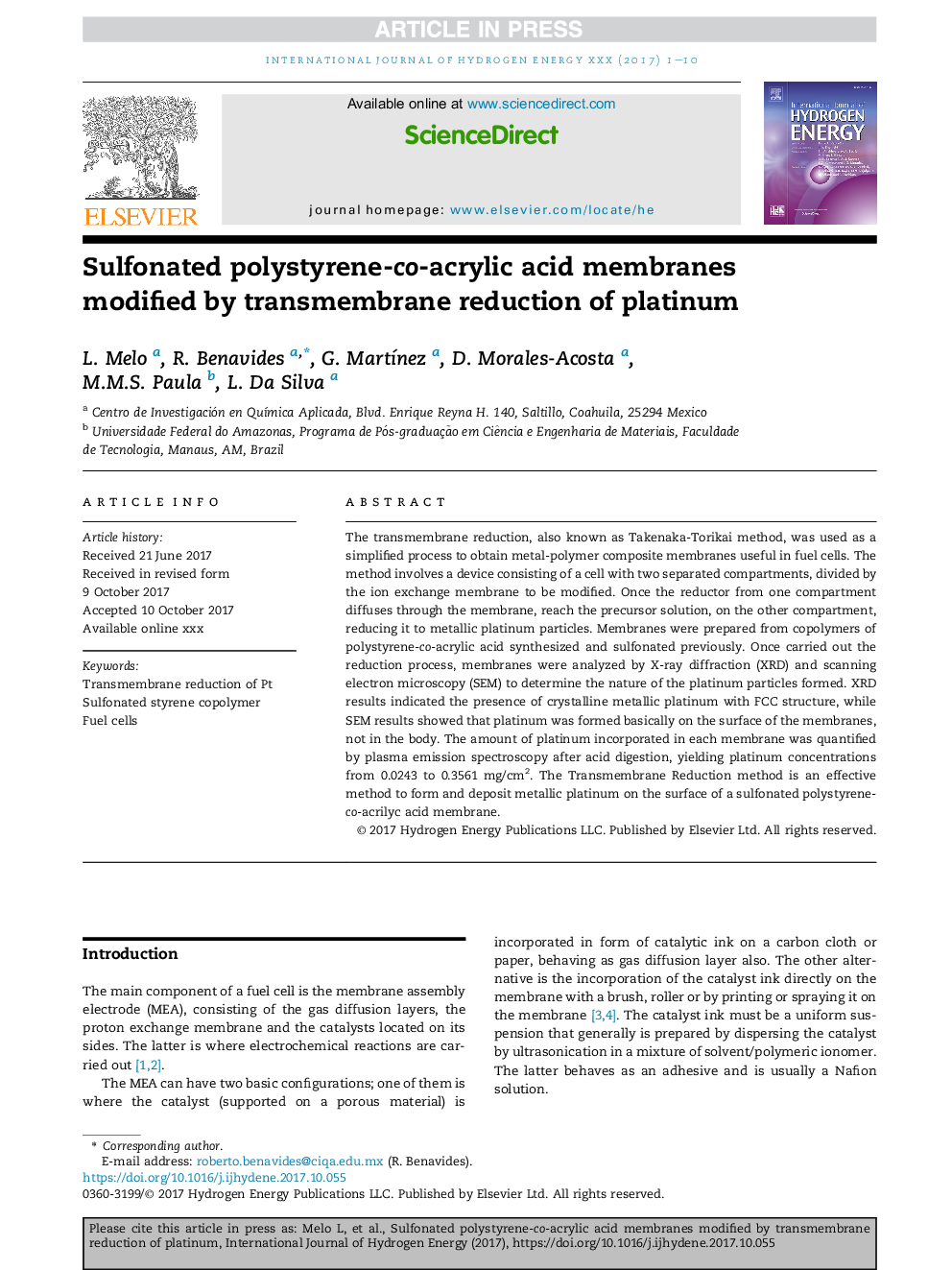| Article ID | Journal | Published Year | Pages | File Type |
|---|---|---|---|---|
| 7709004 | International Journal of Hydrogen Energy | 2017 | 10 Pages |
Abstract
The transmembrane reduction, also known as Takenaka-Torikai method, was used as a simplified process to obtain metal-polymer composite membranes useful in fuel cells. The method involves a device consisting of a cell with two separated compartments, divided by the ion exchange membrane to be modified. Once the reductor from one compartment diffuses through the membrane, reach the precursor solution, on the other compartment, reducing it to metallic platinum particles. Membranes were prepared from copolymers of polystyrene-co-acrylic acid synthesized and sulfonated previously. Once carried out the reduction process, membranes were analyzed by X-ray diffraction (XRD) and scanning electron microscopy (SEM) to determine the nature of the platinum particles formed. XRD results indicated the presence of crystalline metallic platinum with FCC structure, while SEM results showed that platinum was formed basically on the surface of the membranes, not in the body. The amount of platinum incorporated in each membrane was quantified by plasma emission spectroscopy after acid digestion, yielding platinum concentrations from 0.0243 to 0.3561Â mg/cm2. The Transmembrane Reduction method is an effective method to form and deposit metallic platinum on the surface of a sulfonated polystyrene-co-acrilyc acid membrane.
Keywords
Related Topics
Physical Sciences and Engineering
Chemistry
Electrochemistry
Authors
L. Melo, R. Benavides, G. MartÃnez, D. Morales-Acosta, M.M.S. Paula, L. Da Silva,
